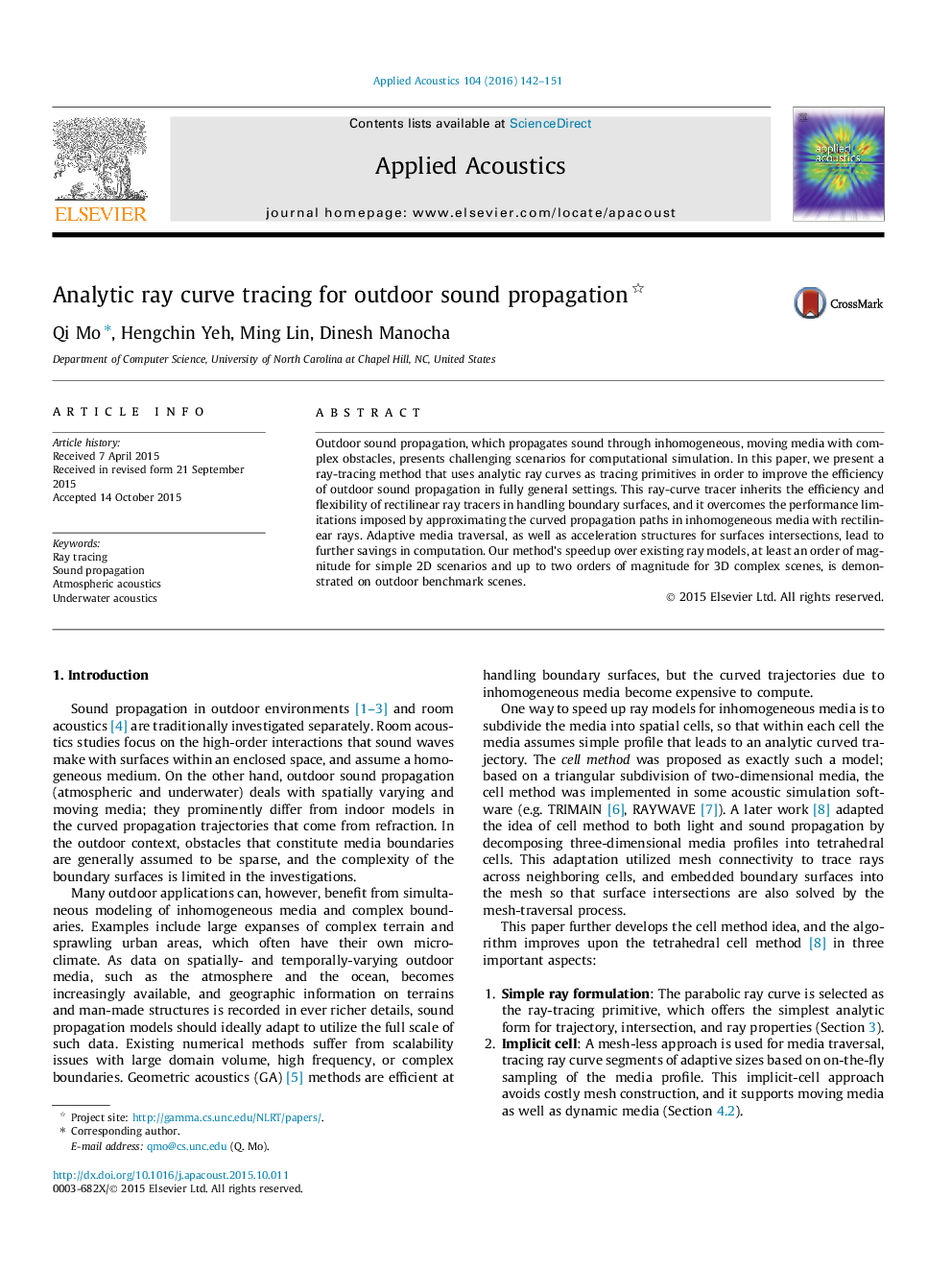| Article ID | Journal | Published Year | Pages | File Type |
|---|---|---|---|---|
| 7152542 | Applied Acoustics | 2016 | 10 Pages |
Abstract
Outdoor sound propagation, which propagates sound through inhomogeneous, moving media with complex obstacles, presents challenging scenarios for computational simulation. In this paper, we present a ray-tracing method that uses analytic ray curves as tracing primitives in order to improve the efficiency of outdoor sound propagation in fully general settings. This ray-curve tracer inherits the efficiency and flexibility of rectilinear ray tracers in handling boundary surfaces, and it overcomes the performance limitations imposed by approximating the curved propagation paths in inhomogeneous media with rectilinear rays. Adaptive media traversal, as well as acceleration structures for surfaces intersections, lead to further savings in computation. Our method's speedup over existing ray models, at least an order of magnitude for simple 2D scenarios and up to two orders of magnitude for 3D complex scenes, is demonstrated on outdoor benchmark scenes.
Related Topics
Physical Sciences and Engineering
Engineering
Mechanical Engineering
Authors
Qi Mo, Hengchin Yeh, Ming Lin, Dinesh Manocha,
